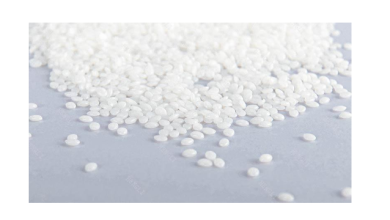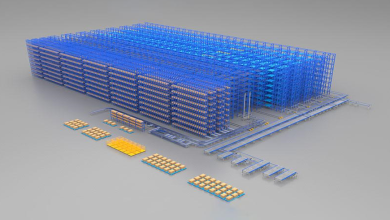Tips for Crafting Effective Marketing Materials Without Breaking the Bank

The Role of High-Quality Print Materials in Today’s Digital World
High-quality print materials play a pivotal role in the success of modern marketing strategies by creating tangible touchpoints that digital platforms can’t replicate. Not only do well-designed brochures, flyers, and business cards communicate core brand messages, but they also engage customers on a sensory level. This tactile interaction with a brand leaves a longer-lasting impression than digital advertisements’ fleeting nature. Additionally, in an increasingly environmentally conscious marketplace, quality print materials reflect the brand’s commitment to sustainability when made with eco-conscious materials.
Print media continues to be an effective form of communication because it captures attention in a cluttered digital world. It’s an integral part of an omnichannel marketing strategy where all forms of advertising work in conjunction to provide a seamless customer journey. The integration of printed collateral complements and reiterates digital campaigns, providing the reinforcement necessary to build credibility and trust with potential customers. Moreover, print materials allow businesses to leave a physical artifact of their brand with prospective customers, which is particularly valuable during face-to-face interactions such as networking events, conferences, and direct mail campaigns.
Designing Marketing Materials: Key Principles to Consider
It’s crucial to adhere to some fundamental principles to make marketing materials as effective as possible. These principles include creating a clear and easy-to-understand order of information, ensuring that your brand identity is consistent across all platforms, and using colors and images tailored to resonate with your target audience. These elements can help you effectively convey your message, establish your brand identity, and make your marketing materials more visually appealing and engaging. If you’re looking for outstanding design ideas for print materials with a discount that will leave a lasting impact on your audience and maintain your brand’s integrity, click here. A consistent design that matches your company’s online presence enhances brand recognition and encourages customer loyalty. It’s essential to use an aesthetic that complements your online elements when designing print materials while leveraging print media’s unique strengths.
Cost-Effective Strategies for Small Business Print Marketing
Small businesses must leverage cost-effective print marketing strategies to compete and thrive. Bulk buying can reduce cost per unit, allowing small enterprises to stock up on printed materials without depleting their marketing budgets. Choosing economical paper stock and standard ink options can yield savings without compromising professionalism or brand messaging. Similarly, limiting the size and complexity of print jobs can ensure that small businesses do not overspend on elaborate materials that may not yield a corresponding increase in response rates or revenue.
Incorporating Technology into Traditional Marketing Campaigns
In an age where technology permeates all aspects of life, integrating technical elements into print marketing can significantly enhance the user experience. QR codes are an excellent example, offering a bridge between the physical and digital worlds. Placing a QR code on printed materials invites interaction. It drives customers to online destinations such as product pages, promotional videos, or a landing page that complements the print campaign. This adds value to the print material and enables the tracking and analysis of customer behavior.
Measuring the Impact of Your Print Marketing Efforts
Quantifying the impact of your print marketing initiatives is essential to validate their effectiveness and to ensure that resources are being used wisely. Establishing clear and measurable KPIs, such as lead generation numbers, customer engagement rates, and sales conversion metrics, provides tangible ways to determine success. Regularly monitoring and analyzing these indicators can help businesses adjust strategies to optimize performance and return on investment.
Assessing the reach and influence of print material can be challenging, but modern technology offers several methods to track engagement. Using unique tracking URLs, promotional codes, and QR codes on printed materials allows businesses to track how many customers engage with their Traditional marketing, when combined with reliable affiliate hosting, plays a key role in building and sustaining an effective overall marketing funnel. This type of analysis is crucial for companies that must ensure every marketing dollar contributes to broader organizational goals.
Sourcing Affordable Printing Options Without Compromising Quality
Finding affordable yet high-quality printing solutions is a common challenge for businesses, regardless of size. To identify the best deals, comparing prices between local printing shops and online printing services is essential. Local printing shops offer the advantage of providing tangible proof and the opportunity for a personal relationship. However, online printing services often have the benefit of offering extensive customization, convenience, and better pricing due to the scale of their operations. Requesting samples from printing services before committing to them is a good idea, allowing you to evaluate the quality firsthand.
Maximizing the Lifespan of Your Marketing Materials
To maximize the return on investment, it is crucial to ensure that marketing materials have a long lifespan. Handling and storing print materials in conditions that prevent fading, tearing, and other forms of wear can keep them looking fresh and professional for as long as needed. Creating content likely to remain relevant and exciting to the target audience over time is also advantageous, extending the period during which the materials can be effectively used.
Future Trends: The Evolution of Print Marketing in the Digital Age
The future of print marketing holds promise, with emerging technologies offering exciting arenas for innovation. Augmented reality, for instance, can bring a print ad to life, offering immersive experiences that captivate customers in ways that pure digital or print cannot achieve independently. This technology integration reinforces the printed material’s message and can create a memorable interaction that leaves a strong brand impression.





